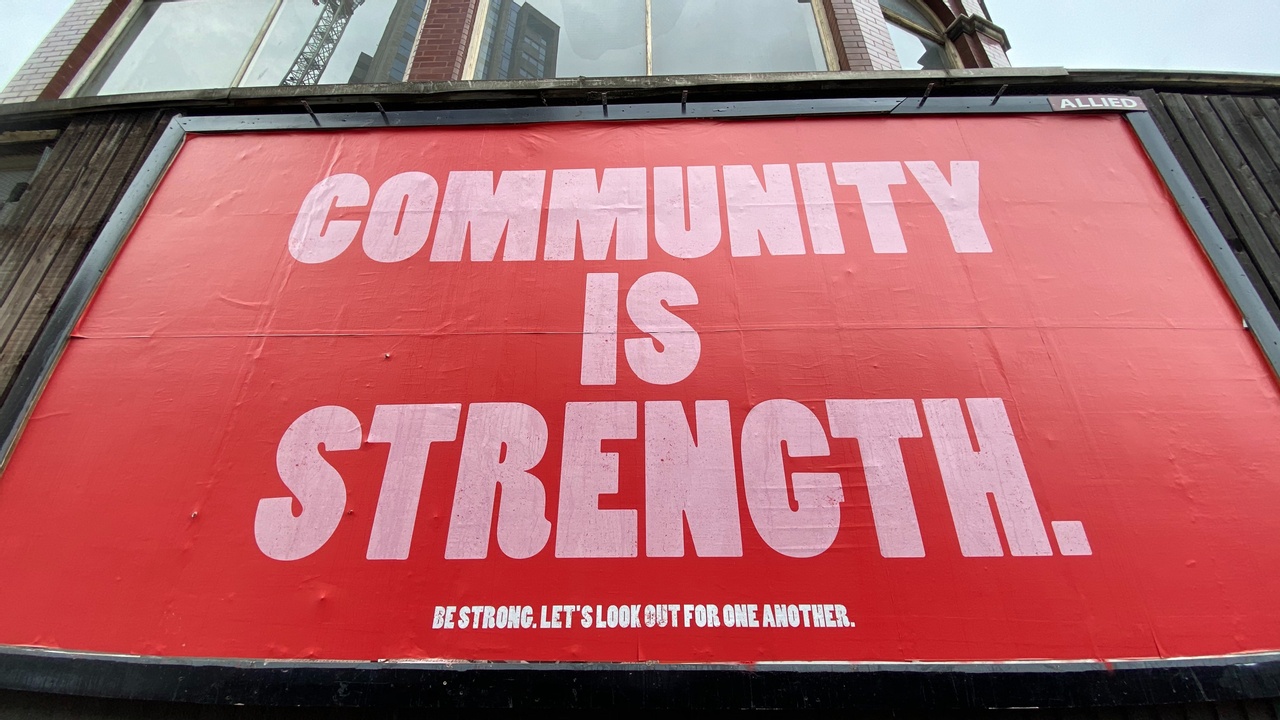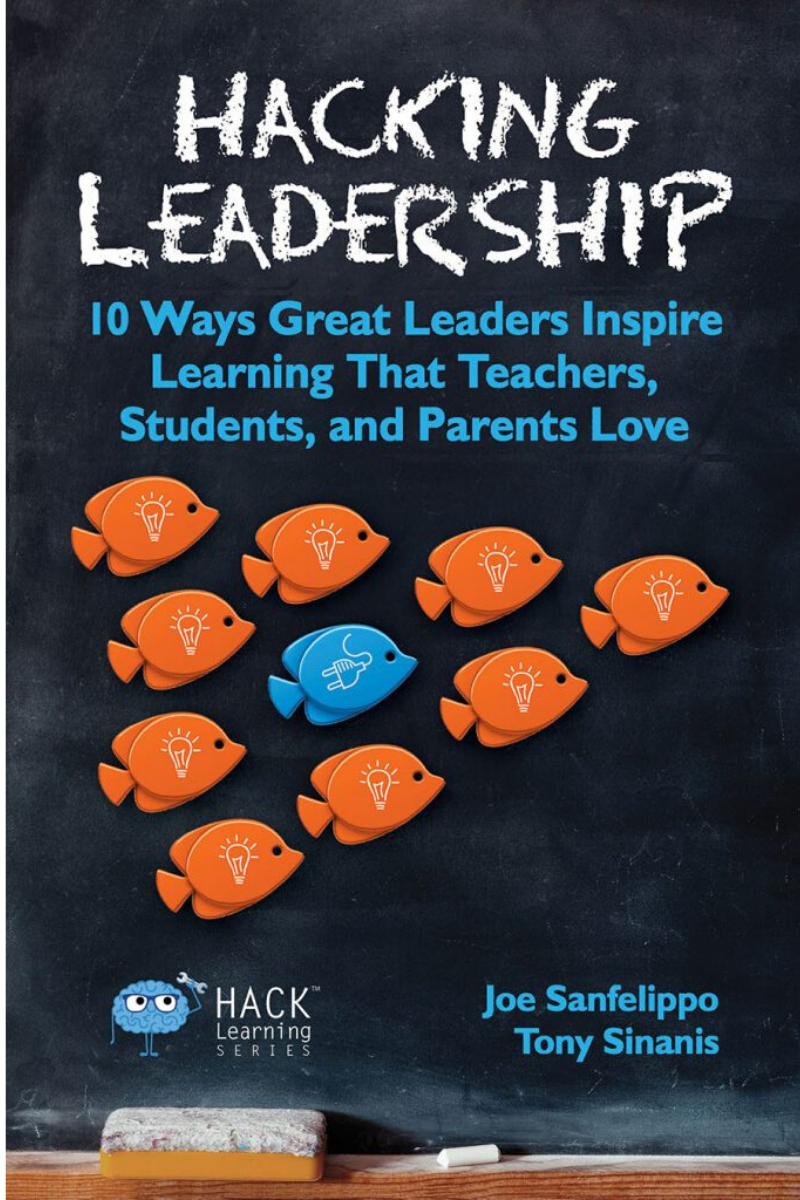No More School Walls: Create Partnerships with the Community
Jul 18, 2025
In an age where information is readily available to anyone at any time, we can leverage communication channels to break down the school-as-fortress attitude and move to support each other for the benefit of our kids.
Flattening the walls of your school entails eliminating the communication barriers so everyone feels like they are part of the school community.
Create C.U.L.T.U.R.E. that incorporates all members of the community, including students, families, and educators.
Everyone in the community should have access to the learning occurring in school, and that begins by knocking down walls and stepping over boundaries to go from fortress to partnership.
This requires a shift in practice but also a shift in philosophy so that educators view engaging with students and their families as an opportunity rather than a challenge.
In the runaway bestseller Hacking Leadership, renowned school leaders Joe Sanfelippo and Tony Sinanis bring readers inside schools that few stakeholders have ever seen—places where students not only come first but have a unique voice in teaching and learning.
Sanfelippo and Sinanis ignore the bureaucracy that stifles many leaders, focusing instead on building a culture of engagement, transparency, and, most importantly, fun. Hacking Leadership has superintendents, principals, and teacher leaders around the world employing strategies they never before believed possible.
Find out where stakeholders spend their virtual lives.
Survey school families about their online preferences. To reach everyone, send both electronic and paper copies. This will give you a quick look at their online lives.
You will find adults on Facebook, students on Instagram, and a collection of both on Twitter based on national trends. Those will probably be your three areas of focus.
When you decide on the tools you will use, take the time to develop a unique handle (username) for the school.
Create a calendar.
Make a list of all the great things that are happening in your school that you could add to your Twitter and Facebook feeds. Our guess is that you can come up with 15–20 immediately.
Once you have a list, add each item to a calendar such as Google Calendar. This way, when you get to school, you already have ideas for what to post that day.
Add reminders on your calendar to post great things happening in your building, such as kids playing on the playground, a fantastic lunchroom, new spaces for learning, or collaborative group work.
Leverage the power of the hashtag.
A Twitter hashtag is a superb tool that allows anyone to get involved with your school’s narrative on Twitter and other social media.
Using a hashtag helps students and staff exercise their voices on their terms. People can still have individual accounts and use the hashtag to filter any school-related thoughts to the school’s collective narrative just by typing a few more characters.
Step 1: Connect online tools for ease of use.
One of the fears we hear from administrators about engaging in social media is that it adds one more thing to an already full plate. Efficiency may help cut the load. Connecting platforms makes the work of posting in multiple areas easier.
Facebook and Twitter both offer linking options, so every time you post to Twitter, it shows up in your Facebook feed. You can also use a number of different third-party services to automate the work. These tools allow you to direct different platforms from one control station so you can post to multiple areas.
Step 2: Set goals for communication.
Stagnant social media channels crush the flow of storytelling in your space. Juggling between communicating too much and not enough can be difficult, and the balance usually depends on your community.
Step 3: Plan the roll-out.
Launching your social media channels is a fantastic feeling! Once you have a handle and hashtag, start getting the word out. First, email your distribution lists a message announcing the new forums you will use to celebrate your space.
Let everyone know exactly what you will be using social media for and what behaviors will not be tolerated. The social media flow should go both ways, communicating information and celebrations from families as well as staff.
Emphasize that the messages are opportunities to celebrate the work and not a sounding board for negativity.
Now it’s time to launch.
The best way to get people involved is to win them over quickly. Think about it like this: communicate a great story, evoke emotion, and follow up with leverage. Find the most amazing thing about your school—ensure it is a story that involves staff and students.
As you think about the form your post will take, understand that visuals create an emotional connection. Posting: “We love it when our kids work collaboratively” is great, but if you have a picture of kids working collaboratively, the connection is much deeper for your community.
Make it a huge deal. Call the local media so they know it is happening, and post it to your social media channels in real-time.
When it is over, use the email distribution lists you have created to share the story with everyone. Your engagement on those pages will go through the roof.
Step 4: Keep the momentum rolling.
Now that you have people watching your space, you need to keep them there. You will have an initial phase where much attention gets focused on the platforms.
Figure out what people are enjoying about your posts to maintain this attention. One of the benefits of using social media channels is how much it changes the conversations at home.
Giving parents specific things to talk to their children about instead of asking, “What did you do in school today?” will evoke a much more substantial response than the typical “Nothing.”
Gaining knowledge empowers parents, so they will go back for more information. Continuing to feed that bank of knowledge keeps the momentum going with your platforms.
Here are a few ways to send the message to parents in your school:
1. Parents may not have a social media account, but most have access to the internet. Streaming your Twitter and/or Facebook feed on the main page of your school website will help parents find the amazing things happening in your school.
2. Give control of the social media account to a student for the day and make contact with the parents prior to the student taking it over.
Word of mouth is still incredibly powerful, and if parents know that their child is running the feed, they’ll make sure people hear about it. This also motivates and sets a level of expectation for the student, as they will know parents are watching.
3. Use a service that collates your tweets. Apps such as Storify allow you to create a social media story that can be shared with parents via email or printed off and sent home for those who do not have internet access.
4. Contests can feed the momentum. Publish a post on your page announcing that the first five people who find you at a football game or music concert and tell you the school district’s vision will get a school T-shirt.
Post a picture of a sticker with a school mascot on it somewhere in the school and tell kids that the first person to reply on Facebook, Twitter, or Instagram (indicating where it is) will get a $10 gift certificate and a t-shirt.
Contests drive people to your communication platforms and ensure that the conversation about school is continuous.
Overcoming Pushback
The pushback for opening a school to the world is often founded on a fear of something going wrong. The potential for something negative to appear on your social media platforms is real and can definitely be scary.
As a leader, you will need to address this fear with three groups of people: staff, parents, and supervisors. Make the potential benefits of using social media clear to all three groups. Highlighting the positives eliminates much of the pushback from these groups.
Teachers are going to complain that this is one more addition to their already overcrowded agendas.
We don’t see keeping stakeholders informed as something that should add more time to an educator’s day; we see it as such a priority that educators need to adjust their time to include.
Interacting with parents and community members is essential to the growth of your school and district. You need people on your side. Conversations with staff should focus less on buying in than on building momentum.
Current narratives about public education are more Charles Dickens than Pollyanna Sunshine, and the more people we can get talking about the great things happening in schools, the better off we all are.
If your people are not on board, the initiative will flounder. Start with them, even before you move to parents and your supervisors.
This is a tough sell to the superintendent.
Come to the district office prepared with evidence proving the initiative’s value and a clear plan to deal with eventualities.
Your superintendent has a personal stake in your activity: They need to answer to someone if it goes wrong. District administrators have to justify decisions to a group of people who may all have different reasons for being on the school board.
The board needs to know how a new direction is going to benefit them and the people they represent. If you have a groundswell of support in your building, it is much more likely that the district administrator and board will support it.
What if parents do not want their children to be featured on the internet?
No problem. Give them an opt-out option; this can be a win-win in the long run.
Giving parents a choice to opt-out of social media is the easiest way to deal with skeptics. When parents elect not to participate, call to let them know how you will use social media and how their child could be included in the process.
You don’t have to try and convert them, just make them aware so they don’t feel left out if they didn’t understand how it’s used. Those calls may result in the family opting back in, but even if that is not the case, it is an opportunity to talk to parents and give them a better understanding of what you do.
Making personal contact with families when stories go out usually garners their support. Giving a parent a call or tagging them in a post draws attention to the positive and often converts them into advocates for your school.
Telling a school’s story shapes its culture, giving individuals a common identity as members of the school community.
When a leader elects to become the chief storyteller to celebrate the school’s successes, the focus shifts away from the school being a disciplinary institution or training facility to rejoicing in its status as a learning community.
Making the school walls transparent will transform both your school and your community.






